Irma la Douce (1963)
“This isn’t just a job — it’s a profession!”
|
Synopsis: |
|
Genres, Themes, Actors, and Directors:
Review: Redeeming Qualities and Moments: Must See? Links: |
“This isn’t just a job — it’s a profession!”
|
Synopsis: |
|
Genres, Themes, Actors, and Directors:
Review: Redeeming Qualities and Moments: Must See? Links: |
“I need this plane — like an alcoholic needs his drink.”
|
Synopsis: |
|
Genres, Themes, Actors, and Directors:
Review: Redeeming Qualities and Moments:
Must See? Links: |
“We Texans like a little vinegar in our greens, honey — gives ’em flavor.”
|
Synopsis: |
|
Genres, Themes, Actors, and Directors:
Response to Peary’s Review: With that said, I agree with Peary that a “particularly memorable” scene is the one “where he strikes it rich and gets covered by oil”: … though I’m less enamored by “the scene where [Dean] — now an older man — drunkenly recites a speech although his audience has long gone home.” Apparently Dean resisted having much aging make-up applied — though to be fair, it looks pretty awkward on Hudson and Taylor: Peary ultimately writes that “more interesting [than Dean] is Hudson’s character, who’s basically a nice guy but tries — without complete success — to cover up his gentle, soft qualities so he won’t seem weaker than his father”; however, since “it’s a new time in American history,” “men don’t have to strut their machismo to be giants.” Unmentioned in Peary’s review but of even more interest to me upon this re-viewing is Hopper’s character — a bold young man who knows what he wants (to be a doctor) and who he wants (Cardenas), and represents Taylor’s no-nonsense approach to equitable racial relations coming to full and personal fruition. Speaking of racial relations, the film’s most notable theme is that of racial intolerance — and the filmmakers deserve acclaim for presenting this in such a straightforward fashion. While modern social justice language isn’t used, we can clearly see white supremacy on dominant display time and again — from Hudson’s huffy refusal to acknowledge the theft of Texan land from Mexicans (one of Taylor’s first comments to him the night they meet), to his annoyance at Taylor humanizing their Mexican-American employees by seeking to know and correctly pronounce their names, to Taylor’s insistence that a doctor go look at a sickly “wetback” Mexican baby. In later scenes, we see even more egregious acts of racist segregation in 1940s Texas: a beauty salon refuses to serve Cardenas once they see her skin color (per orders of Dean); and, in the film’s penultimate scene, Hudson ends up in a fist fight with a bigoted cafe owner (Mickey Simpson) who refuses to serve a Mexican family and treats Hudson’s daughter-in-law and grandson with racist contempt. As Peary notes, this is a “terrific scene” — and though the “wide-screen production is patriotic,” it “still acknowledges that bigotry is widespread.” Peary closes his review by noting that while the “film has slow and hackneyed scenes,” it’s “quite enjoyable.” Sadly, I can’t really agree: while it’s worth a look for its historical popularity, it’s not one I personally plan to revisit. Redeeming Qualities and Moments:
Must See? Categories (Listed in 1001 Movies You Must See Before You Die) Links: |
“What’s better: stealing, starving, or fighting?”
|
Synopsis: |
|
Genres, Themes, Actors, and Directors:
Review: Redeeming Qualities and Moments: Must See? Links: |
[Note: The following review is of a non-Peary title; click here to read more.]
“I once thought if I were queen I’d be so happy — to be applauded and adored and obeyed.”
Synopsis:
When Empress Maria Theresa of Austria (Alma Kruger) tells her daughter Marie Antoinette (Norma Shearer) that she will become the next queen of France, Marie is excited for the new adventure but is quickly demoralized when she realizes her husband-to-be (Robert Morley) is an overweight, shy man who would prefer to be left alone to make locks. Marie finds solace in socializing at court, befriending a power-hungry duke (Joseph Schildkraut) and falling for a Swedish count (Tyrone Power) while resisting taunts from mean-spirited Madame du Barry (Gladys George). After Morley’s father (John Barrymore) dies, Marie and Louis (Morley) eventually have two children — but the wrath of the people of France has been building, and the royal family soon find themselves caught in a deadly spiral.
Genres, Themes, Actors, and Directors:
Review:
Norma Shearer’s crowning role as the “First Lady of MGM” was playing the title character in this big-budget biopic (directed by W.S. Van Dyke) about the infamous French queen who died at the guillotine (and apparently never actually said, “Let them eat cake.”). Perhaps unsurprisingly, the film paints Marie in an almost uniformly positive light: she’s shown offering tremendous empathy and compassion towards Morley even when he’s at his most unsympathetic, and the eventual companionship they develop through their marriage is a worthy portrait of how arranged marriages can evolve into trusting alliances. Meanwhile, Morley’s portrayal of King Louis XVI is notable for refusing to villainize him, instead showing simply that he was constitutionally unsuitable for his role. The sets and costumes are marvelous, and the story-line reasonably engaging (though Power’s character is only given a peripheral role at best; I suppose MGM wanted to keep Shearer’s character “pure” and free from the actual ongoing affair she had with him in real life). The most intriguing supporting character is played by Joseph Schildkraut, whose make-up as the Duke d’Orleans is highly effective — see stills below for a comparison of his character “putting on an act” versus revealing his inner (true) character.
Redeeming Qualities and Moments:
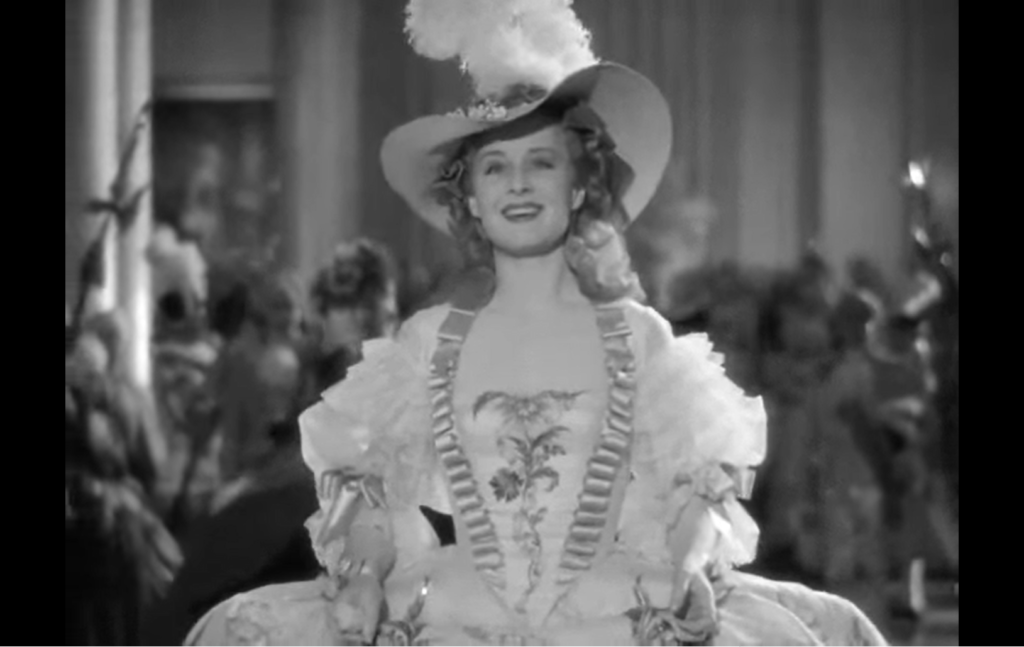
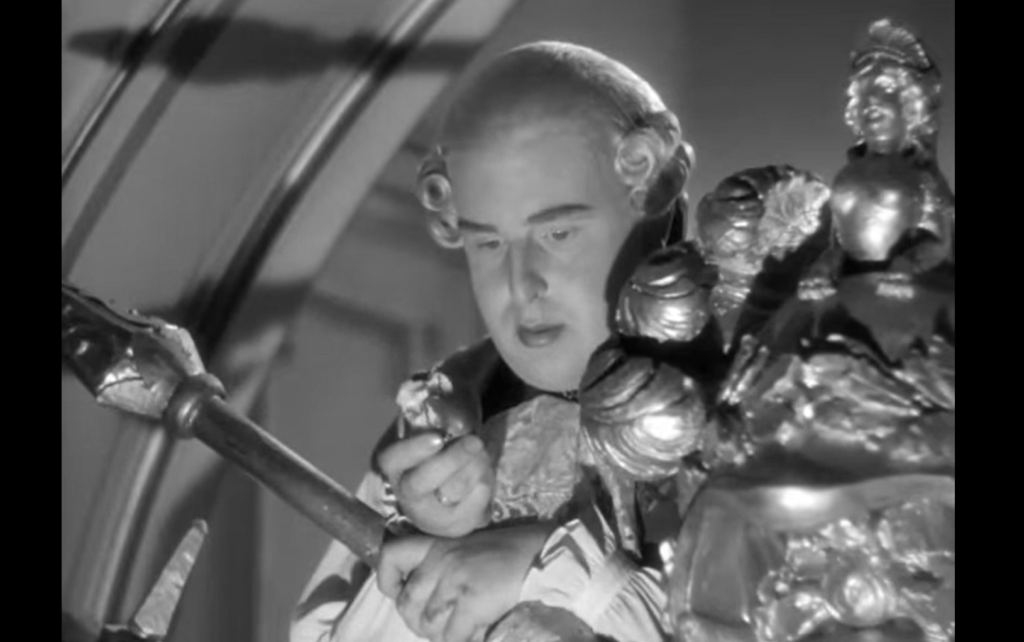
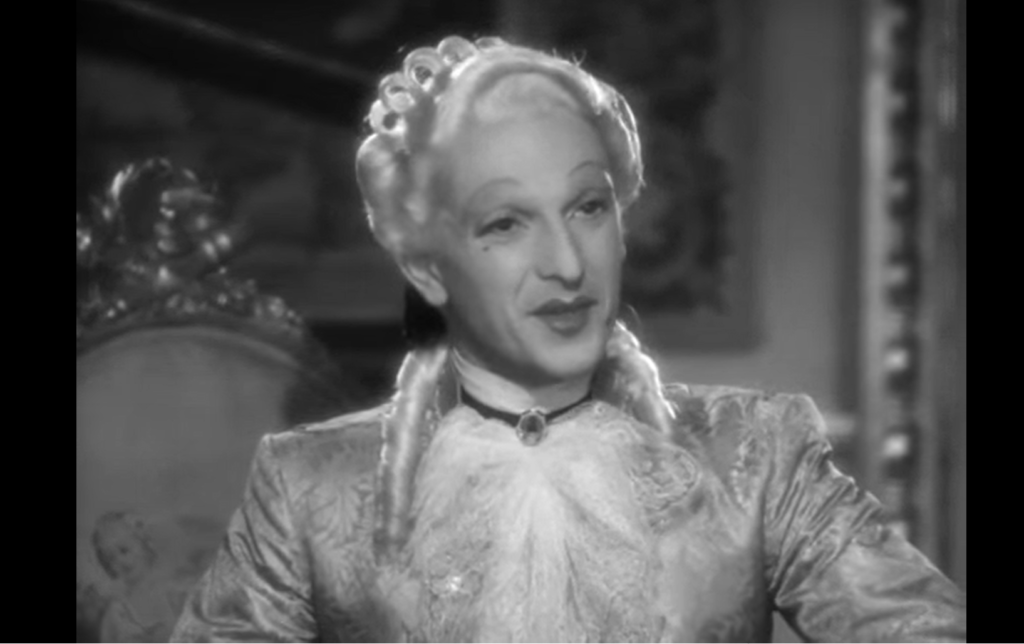
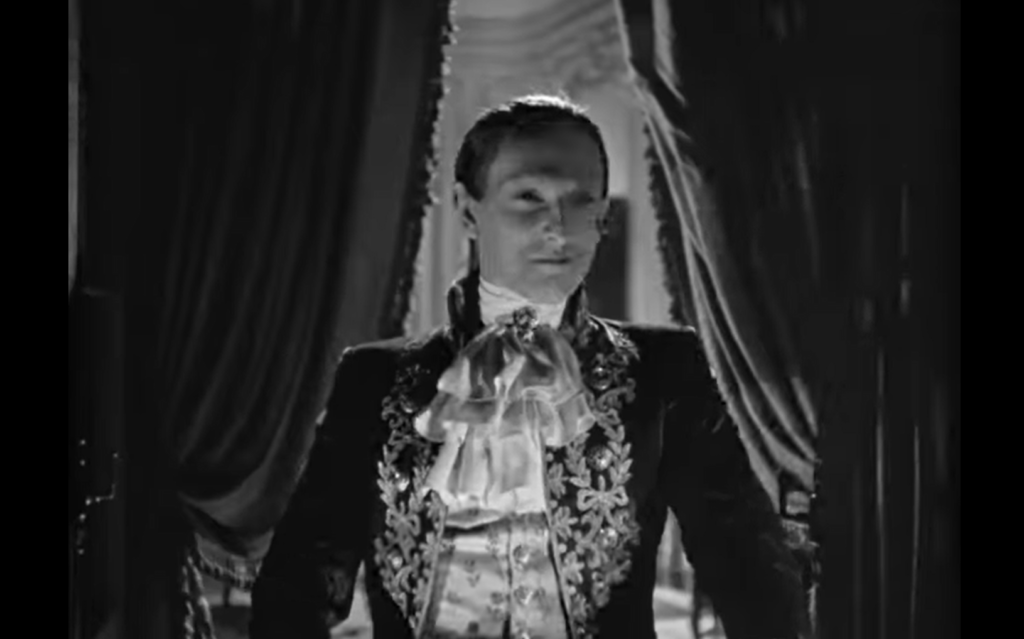
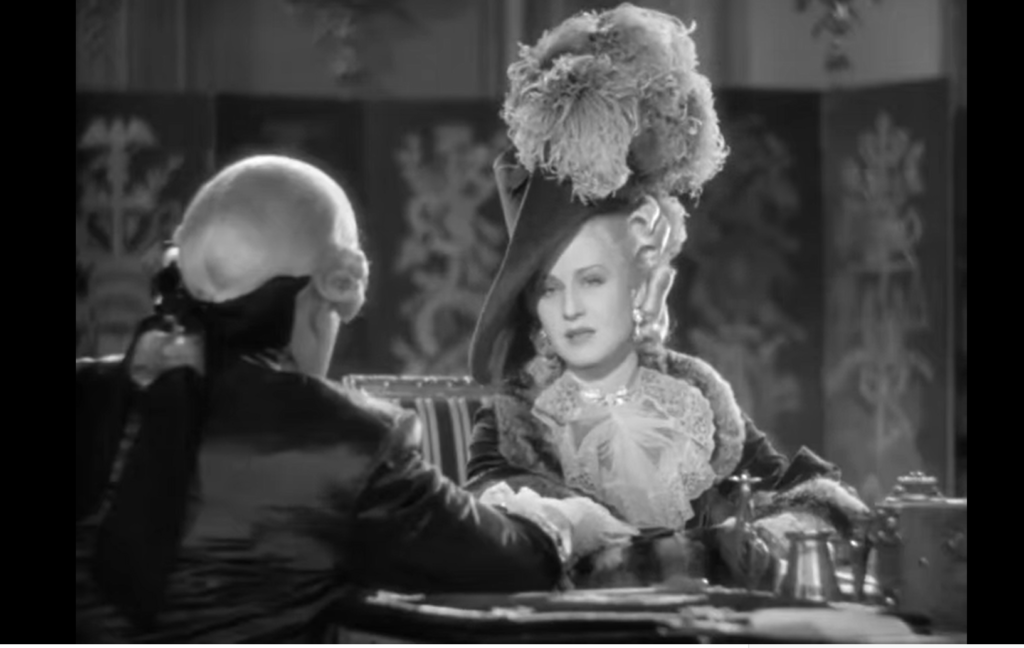
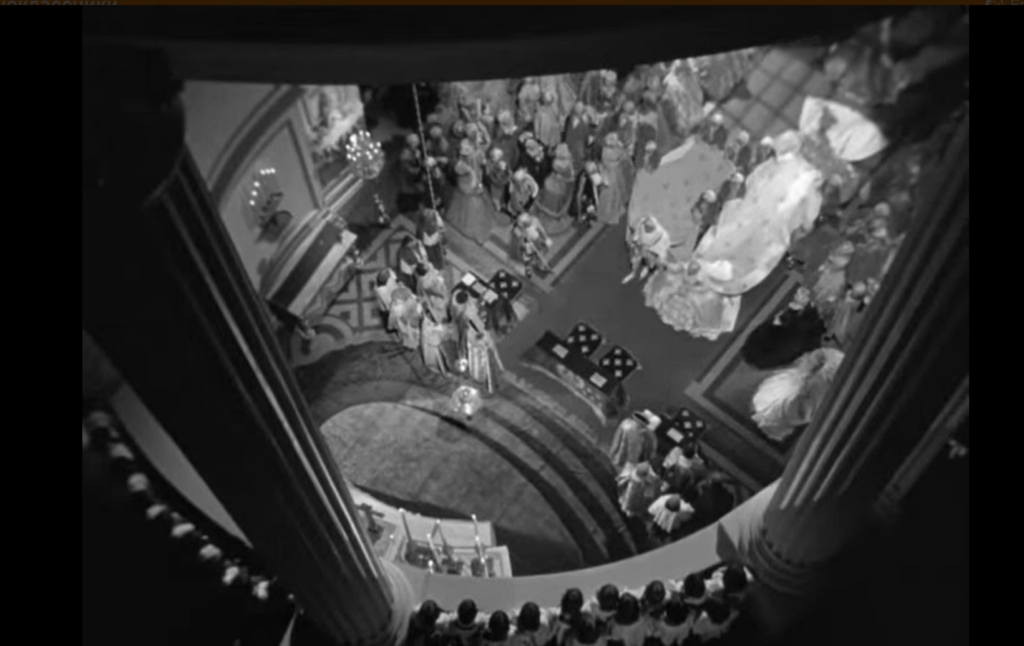
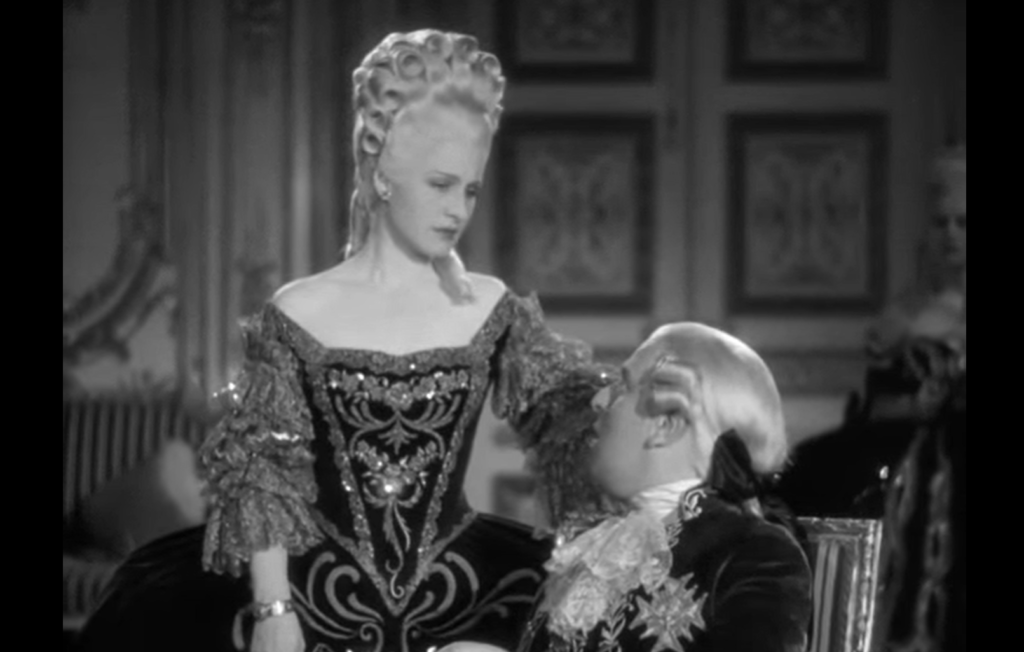
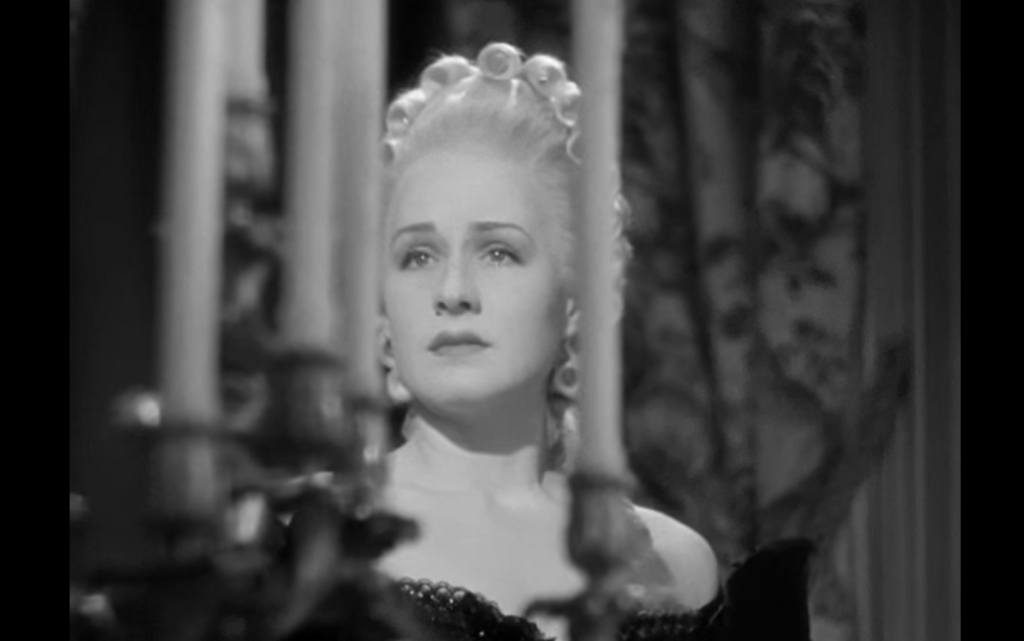
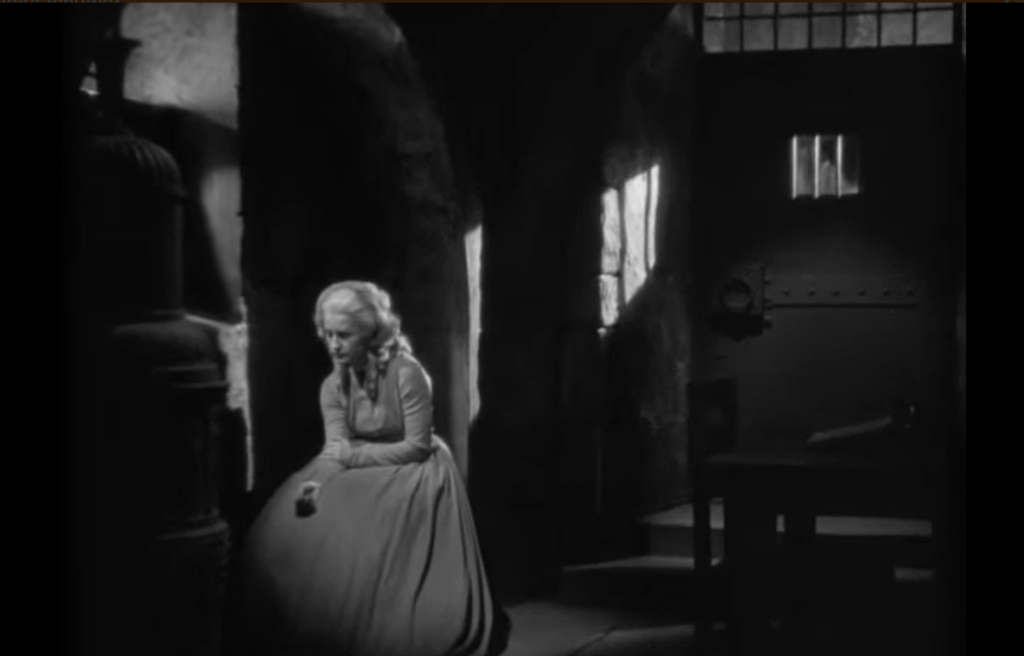
Must See?
No, though it’s worth a look for Shearer’s Oscar-nominated performance.
Links:
“Davy Crockett don’t lie.”
|
Synopsis: |
|
Genres, Themes, Actors, and Directors:
Review: his controversial service as a congressman from Tennessee… and his participation in the Battle of the Alamo. Parker comes across as appropriately humble, stalwart and brave, and we appreciate his authentic respect for the Native Americans he interacts with. However, this film likely won’t be of much interest to modern film fanatics given that it was clearly marketed at youth audiences of the day — who responded by kicking off an absolute mania for Davy Crockett paraphernalia, especially coonskin caps. Fair warning: the title song is guaranteed to remain stuck in your head for hours or days after watching this film (I’m humming it to myself right now…). Redeeming Qualities and Moments: Must See? Links: |
“A good miracle is only a good trick — unless it is made part of a new religion.”
|
Synopsis: |
|
Genres, Themes, Actors, and Directors:
Review: Mayo has received flak for being decked out with outrageously gaudy eye make-up: and the artistically minimalist sets are criticized as… not realistic enough. But once one accepts the stylized world on display here, it’s possible to get caught up in the melodrama, which involves Newman eventually meeting the Apostle Peter (Lorne Greene) to add his visage to the chalice. Angeli is lovely as an innocent young Christian who falls for Newman: and the scenes set in Nero’s Rome are appropriately surreal — particularly the one in which Nero and his wife are offered platter after platter of gold-plated delicacies with outrageous combinations of edibles. When Nero (Aubuchon) reminds his wife, “We must not let our people go home in a grumbly mood… We must give them something to watch.”, one can’t help thinking how little has changed in 2000 years vis-a-vis the public’s desire for outrageous spectacles. Note: Watch for blonde (!) Natalie Wood playing Mayo’s younger self. Redeeming Qualities and Moments: Must See? Links: |
“What’s in it for me?”
|
Synopsis: |
|
Genres, Themes, Actors, and Directors:
Review: According to one poster on IMDb, “After losing everything he made in Hollywood and after getting [out] with barely a change of clothes from revolutionary Havana in 1959 this man needed a stake. So he sold the story of his life to B studio Allied Artists and the result was The George Raft Story.” Still, one wonders exactly what the point was, other than to highlight Raft’s many criminal connections, and give individuals like Al Capone (Neville Brand): and Bugsy Siegal (Brad Dexter): opportunities for “cameo” appearances; other notable individuals in Raft’s life — including Betty Grable, for instance — had to be renamed (in this case, Jayne Mansfield played “Lisa Lang”). The script gets off to a decidedly odd start, with an extended comedy act in a nightclub (who exactly are those fellows?) before Raft’s then-girlfriend Sheila (Julie London) sings a ditty: As the film closes, penniless Raft is given advice to accept roles like Spats Colombo in Some Like it Hot and learn to embrace typecasting because at least it provides a living. Okay. Note: Check out this interesting article for a blow-by-blow overview of all the films Raft either made or turned down, with an emphasis on the ramifications of the latter. Redeeming Qualities and Moments: Must See? Links: |
“It’s as though there were a piece of the sun locked up in here!”
|
Synopsis: |
|
Genres, Themes, Actors, and Directors:
Review:
As scientists intensely committed to their craft, they are quite happy viewing their arrangement as a practical one — though the screenplay eventually shows the depth of love that emerges through their happy and productive union (including the birth of two daughters). Meanwhile, it’s to the screenplay’s immense credit that lines like, “All right, then — radium won’t be separated from barium.” are authentically interesting (and comprehensible to lay audiences). We watch in eager anticipation as Marie gradually comes to understand (with help from Pierre) the next steps she must take to uncover and isolate radium — then eventually learns about the harm she’s unintentionally caused herself due to so much exposure, but decides it’s worth the risk to continue (albeit with more protections). The movie is atmospherically filmed throughout (by director Mervyn LeRoy and DP Joseph Ruttenberg), making it a visual treat as well. Redeeming Qualities and Moments:
Must See? Categories
Links: |
“When you know what you want, why waste time?”
|
Synopsis: |
|
Genres, Themes, Actors, and Directors:
Review: with Stanwyck clearly coveting a role as her father’s lead partner — to the point of turning violent and vicious once that’s threatened. In his final role before dying of a heart attack, Huston is a larger-than-life, enigmatic figure, someone whose raw exuberance for ranching is contagious: … and Stanwyck gives a powerful performance as a woman with intense emotions whose passion for her home (inextricably tied to her her father) ultimately surpasses all other goals in her life. Three middle-aged actresses — Judith Anderson… Beulah Bondi (as the wife of an influential banker)… and Blanche Yurka (as Roland’s mother): are given memorable supporting roles as well. Meanwhile, the gothic cinematography by Victor Milner is appropriately moody: providing many haunting shots and moments. This one is well worth a look. Redeeming Qualities and Moments:
Must See? Categories
Links: |